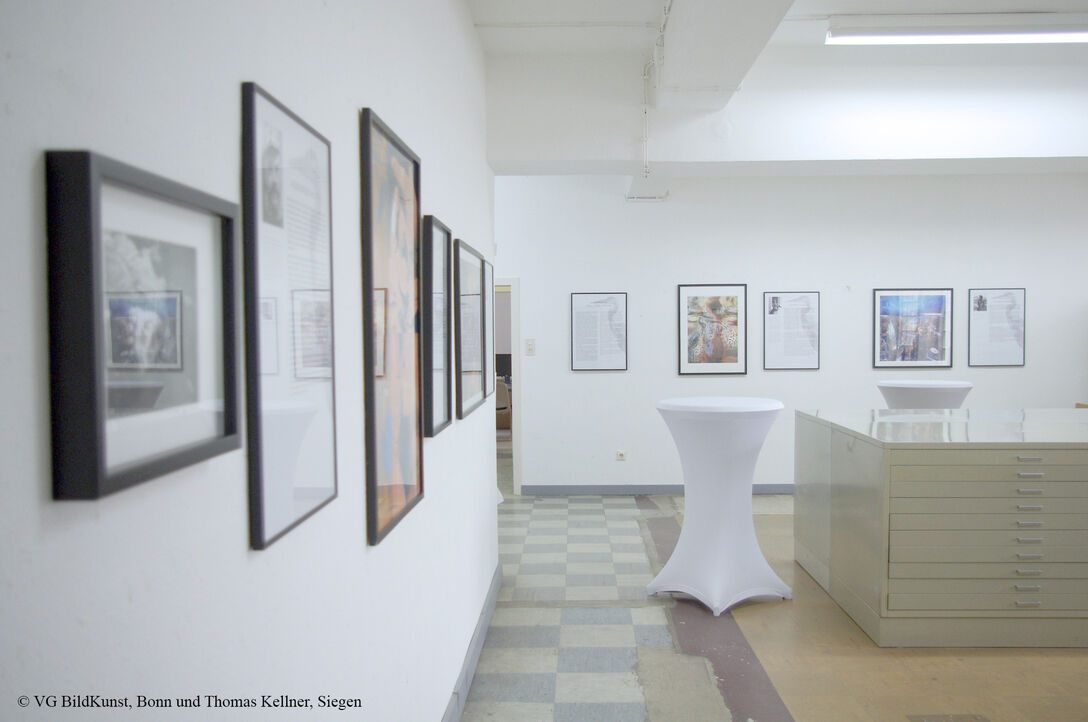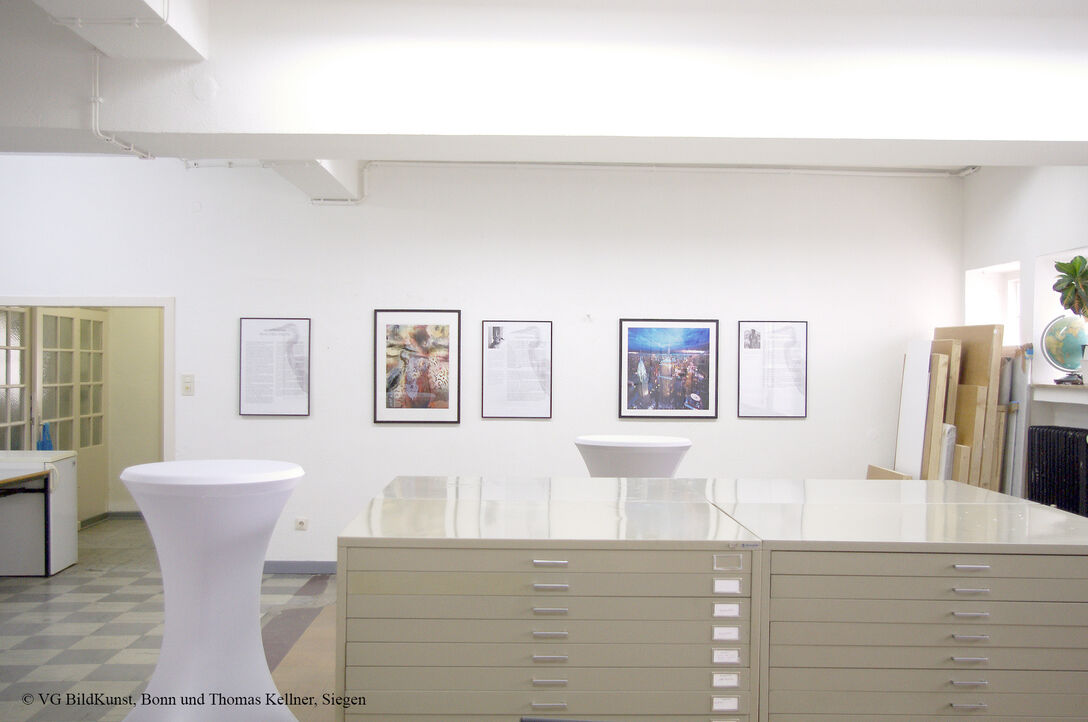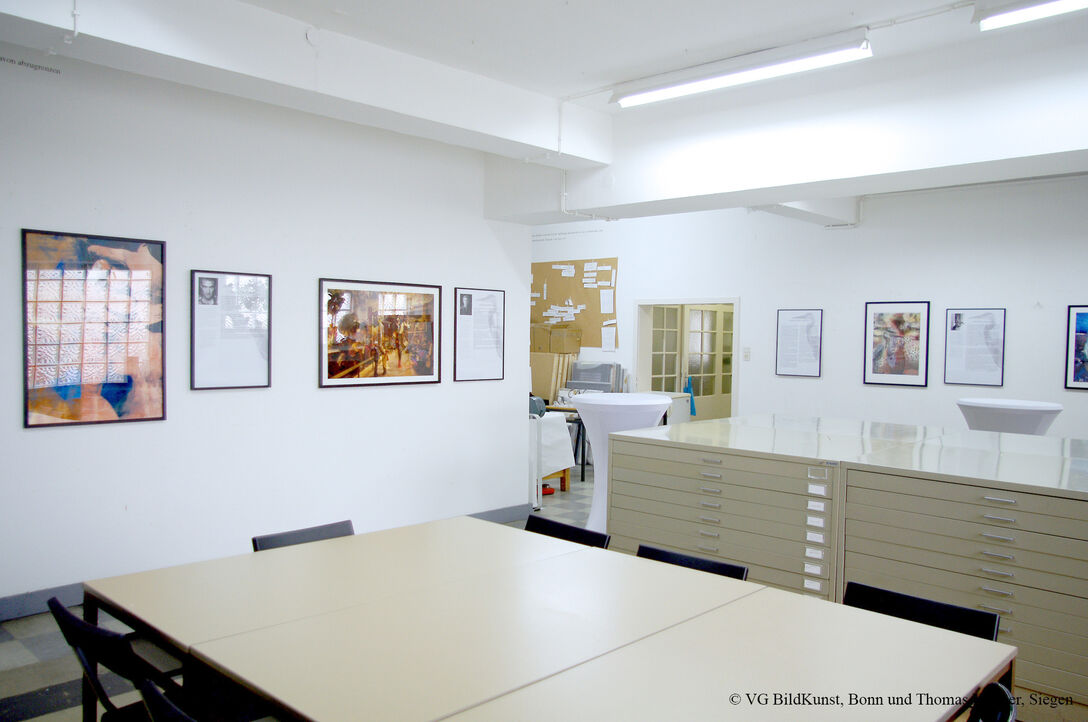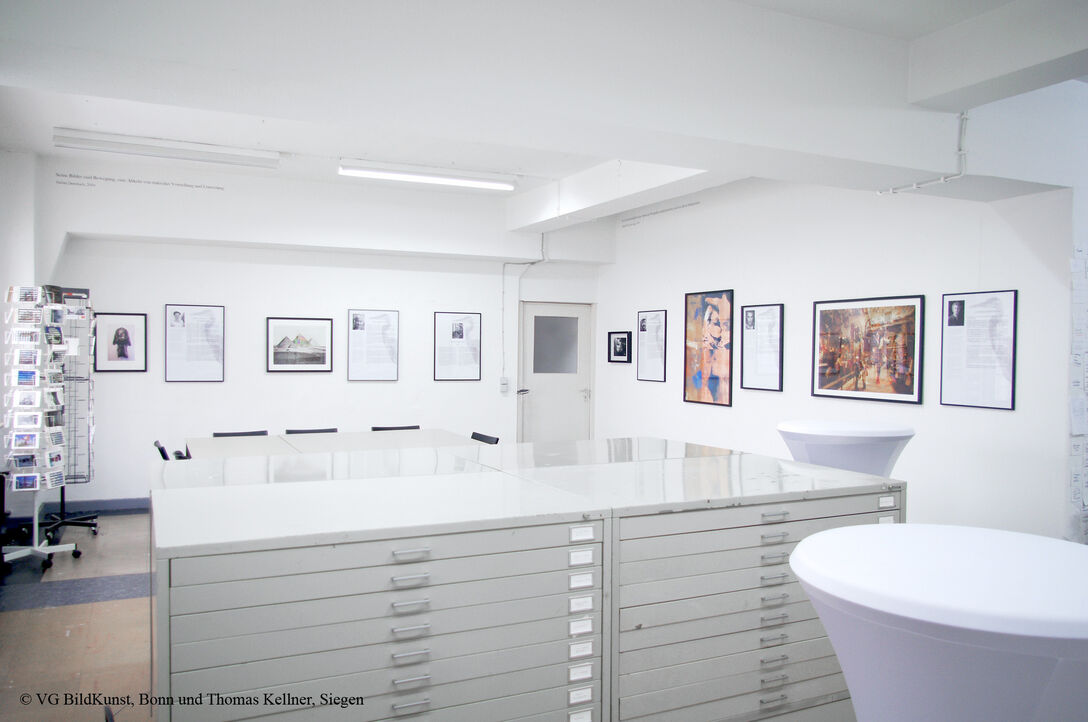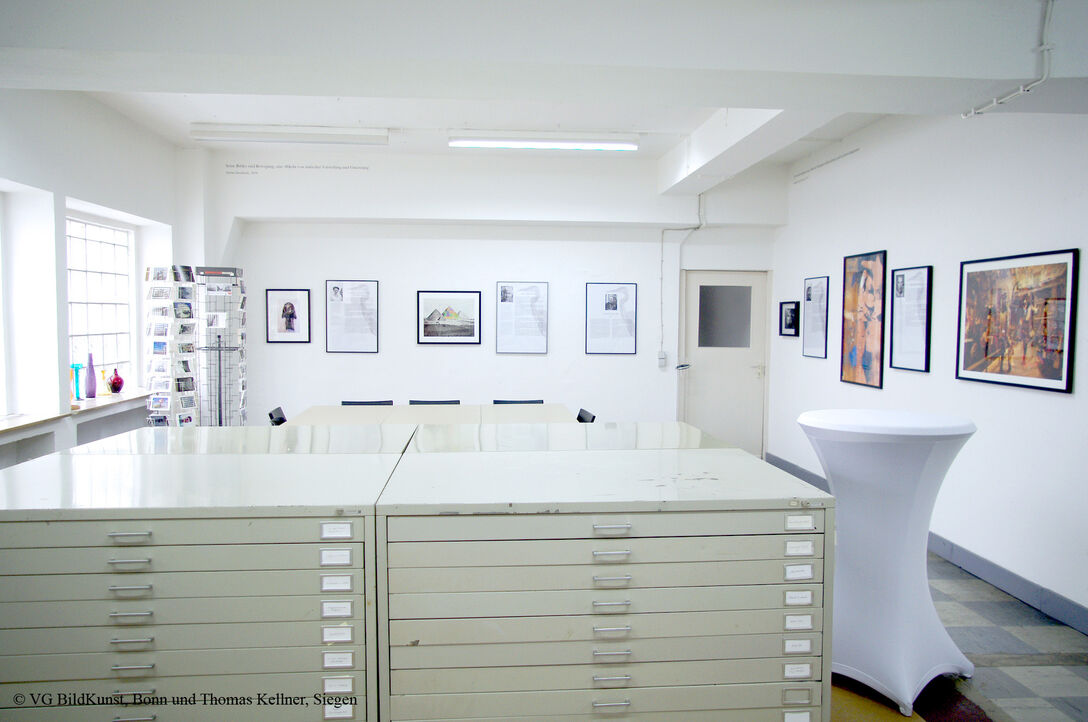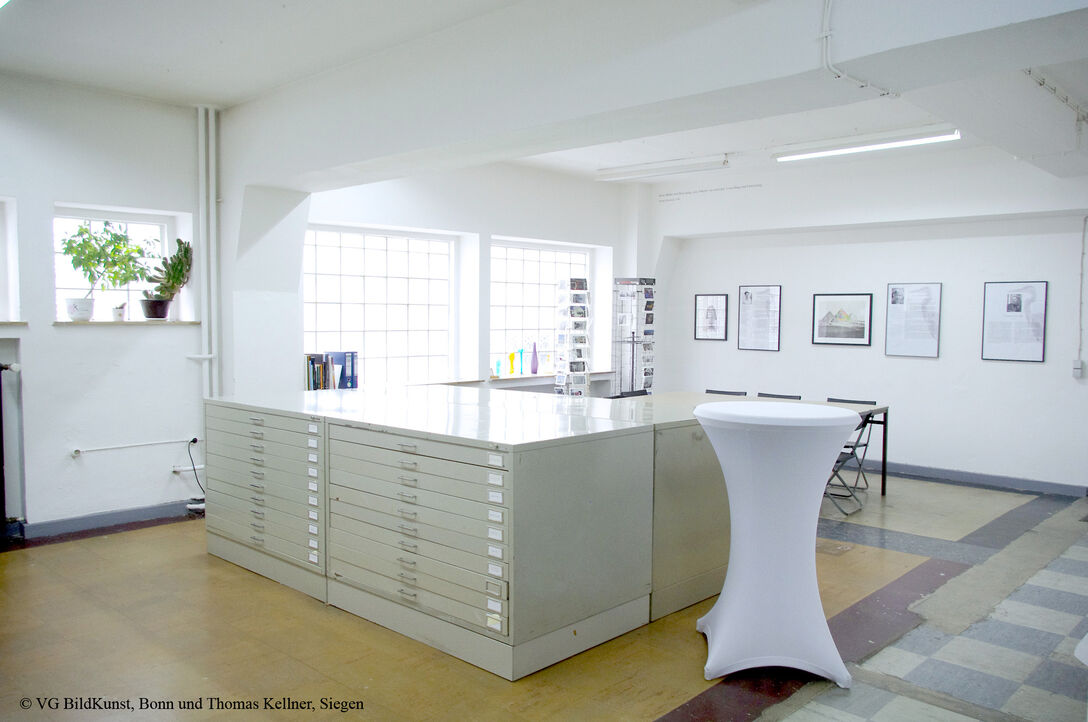Alternative Realities (facts), Studio Thomas Kellner, Siegen
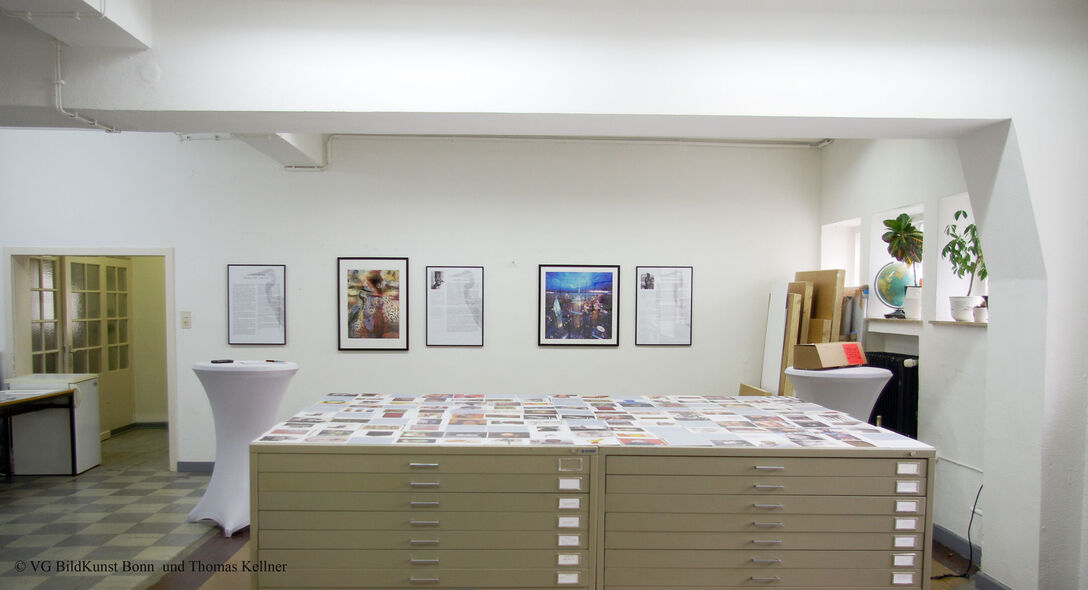

Alternativ Realities (facts)
May 21 - September 7, 2017
Studio Thomas Kellner, Siegen, Germany
exhibiting artists: Andres Wertheim, Bethany de Forest, Ludmila Steckelberg de Santana, Ploutarkos Haloftis, Bill Armstrong, Kathryn Dunlevie, Max de Esteban
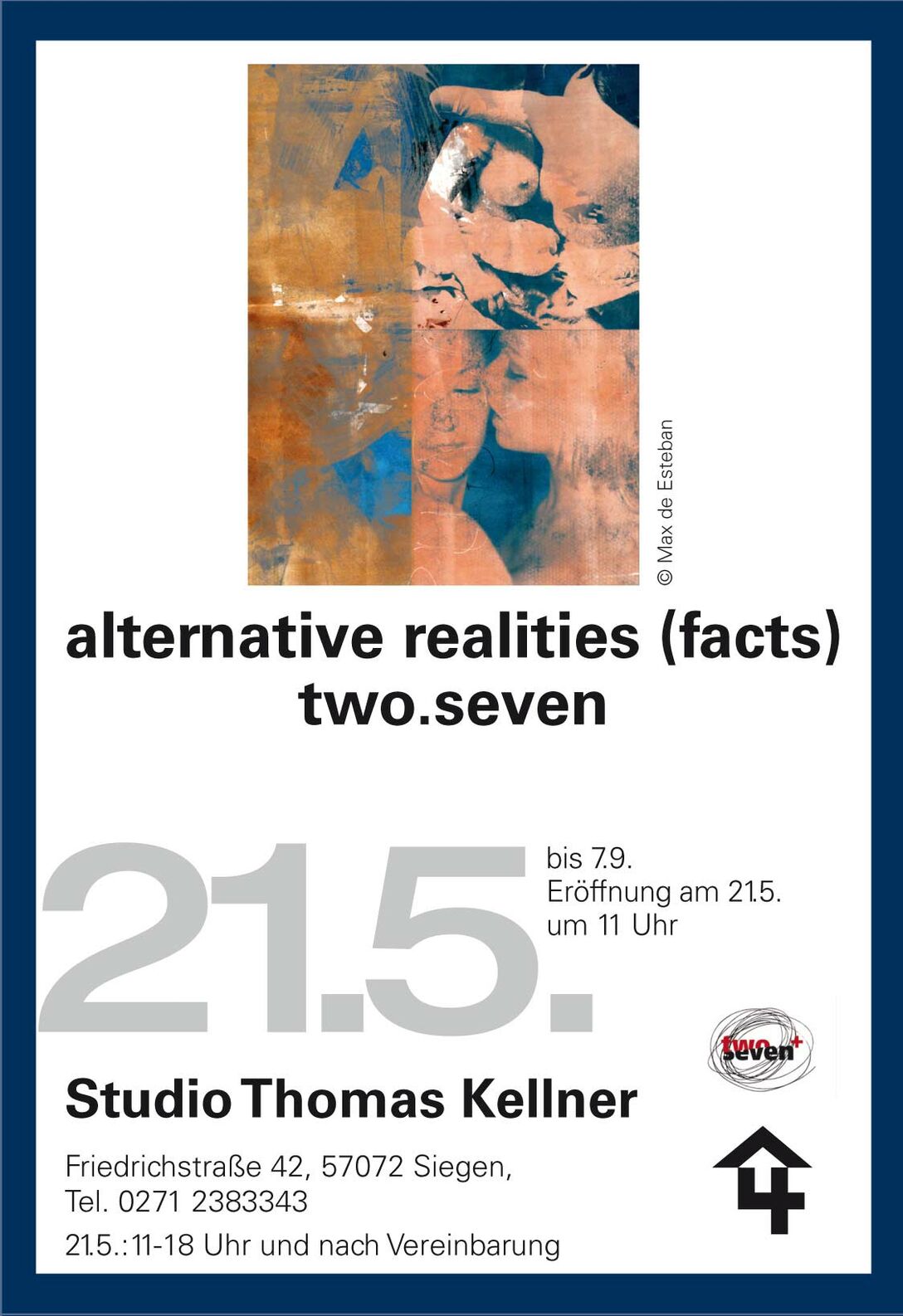
Studio Thomas Kellner
Alternative Realities (facts)
May 21-September 07, 2017
Thomas‘ Art Memory
May 21, 2017
How do art and play go together? On the occasion of ArtDay on 21st May museums, galleries and independent institutions will again be offering a varied program for the 19th Art Summer of Siegen. Admission to all events is free.
On ArtDay Studio Thomas Kellner opens its doors at 11am. The exhibition, Alternative Realities (facts), will be on display at Kunstsommer 2017. In addition to this year’s motto "KunstSpiel" (ArtPlay), games will be played at Studio Thomas Kellner from 2pm. It is based on the private collection of the curating studio owner which consists of works by mostly Siegerländer artist. However, this is not an ordinary memory. From 150 memory cards, not only the matching counterpart, but also the associated artist, must be found. The game is played with eight people: 4 groups of 2 players.
However, playing is not limited to cards in the studio of Thomas Kellner.
7 artists of 6 countries use their photographs to depict reality by using irritation, ambiguity, transformation and collage.
The work of spanish artist Max de Esteban visualizes his own statement about the conditions between nature and digitalization in the age of abstraction. We have reached a crossroads where life circumstances are imaged/depicted by digital approaches that we have developed, but also materialized in a digital way. This paradox, caused by digitalization, leads to the alienation of humanity in our today’s society.
Bethany de Forest began to build and afterwards to photograph dioramas during her education at the art school. It creates the illusion that the photographed place is life-size to which one could travel.
Andrés Wertheim’s works explore the different levels of visible reality. In his documentary, he records what is in front of our eyes, but knowing that the notion of truthfulness in photography entails doubts: is the camera never lying or is it just a device that captures the existing?
Kathryn Dunlevie's current project is a homage to the rich intersection of the overlapping cultures of New Orleans and the still perceptible aura of its stormy history. The interweaving of centuries-old history can be found in gardens, buildings and entire districts.
The American Bill Armstrong creates new dreamlike realities by integrating colors in famous photographs from the early history of photography.
Ludmila Steckelberg de Santana also uses old photographs for her work. Through embroidering, she transforms her works with color in textile interventions and puts her into a romantic relationship between a foreign past and her own past.
The art of using old materials to create something new is also to be found at Plotarchos Haloftis. He uses old letters, broken dolls, and torn posters as foundation for his work. Destroyed by nature and brought to a new place they get a second life. For anyone but the artists, the items are no longer informative or usable. Through his art, they become heroes of darkness -surreal, poetic short stories.
The Art Day 2017 in studio Thomas Kellner is worthwhile for you, if you want to escape the reality of everyday life and dive into illusioned and digitized realities for a day. For an overview of all stages of Art Day 2017, a flyer will be available in stores and public buildings. You can also find the program of the 19th Art Day on Facebook.
Opening hours
May 21, 2017 11am-6pm
and by arrangement
Thank you to my wife Helga for always supporting my curatorial ideas, thank you to Kunsommer for promotion and specialm thank you to my exhibiting friends in this show.
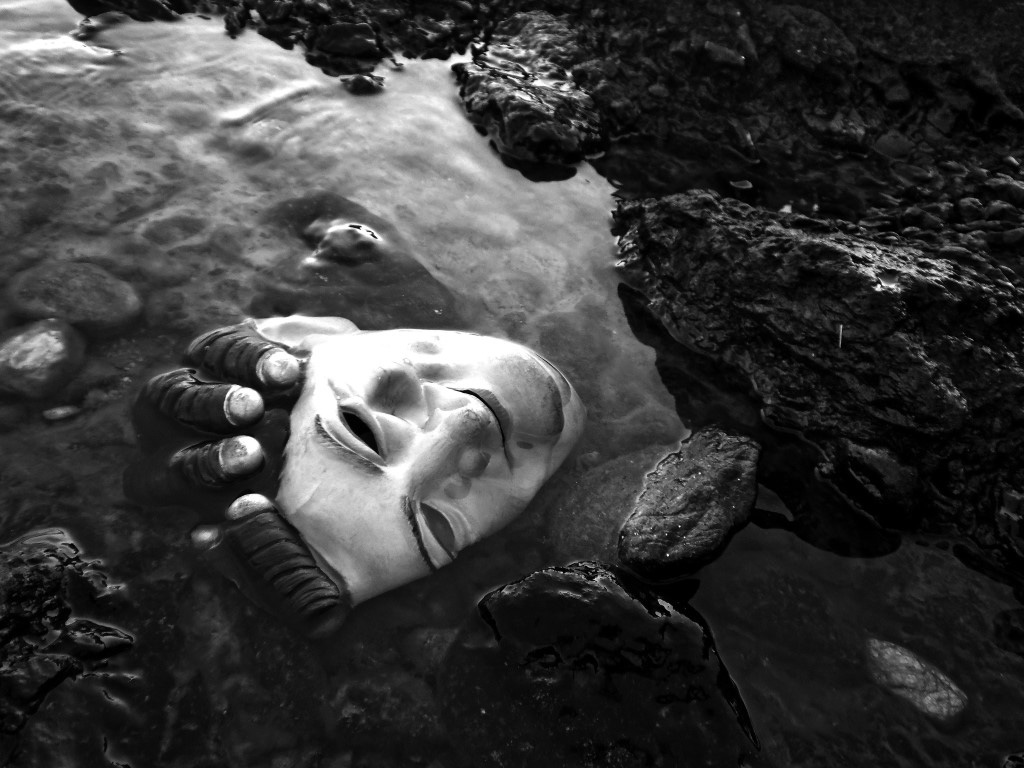
Ploutarcos Haloftis (Greece) is a writer and photographer. He lives and works in Athens. Halofti has exhibited his works since 1995 in group exhibitions and solo exhibitions. To the group exhibitions belongs the "European Face" and "Fotonoviembre Spain", as well as the ninth and eleventh "Photography gathering: Aleppo Syria", which all were shown in the "Stavlos Gallery" in Athen. His solo exhibition in 2003 was "SYNKRIA Thessaloniki Greece" and "Photographic Center of Thessaloniki".
I have been photographing for all my life as an adult. After having followed lessons in art photography for two years in Athens ( Focus school for photographic studies ), I have developed a keen interest to the more subjective forms of photography. A really big part of my photographs (maybe the 80 % ) is made in b/w 35 mm film, with low cost compact cameras of this format. My work REJECTED ITEMS IN A SECOND LIFE is the digital equivalent of my earlier works with analog film. Continuing my idea of using cheap cameras and lenses ( and taking advantage of their flaws ), in this case I used an old digital camera with an old, low quality digital lens on it. Trying to combine my two hobbies: walk and photography, I strolled and strolled for hours in order to locate the images I was looking for. Pieces of letters, broken dolls, torn posters and even a rejected mask, became the heroes of my short stories. Destroyed by the elements and relocated either accidentally or by me, they get a second life as parts of my photos. No more informative or useful - to anyone else but me - they now become heroes of the dark, surreal and poetical short stories I try to create. I want the photos of this project to make the viewers recall the tales of their childhood and to remind them of the strange creatures those tales made them imagine. If we consider a photo as a slice of reality, I want this slice to be as much surreal as I can make it to be.
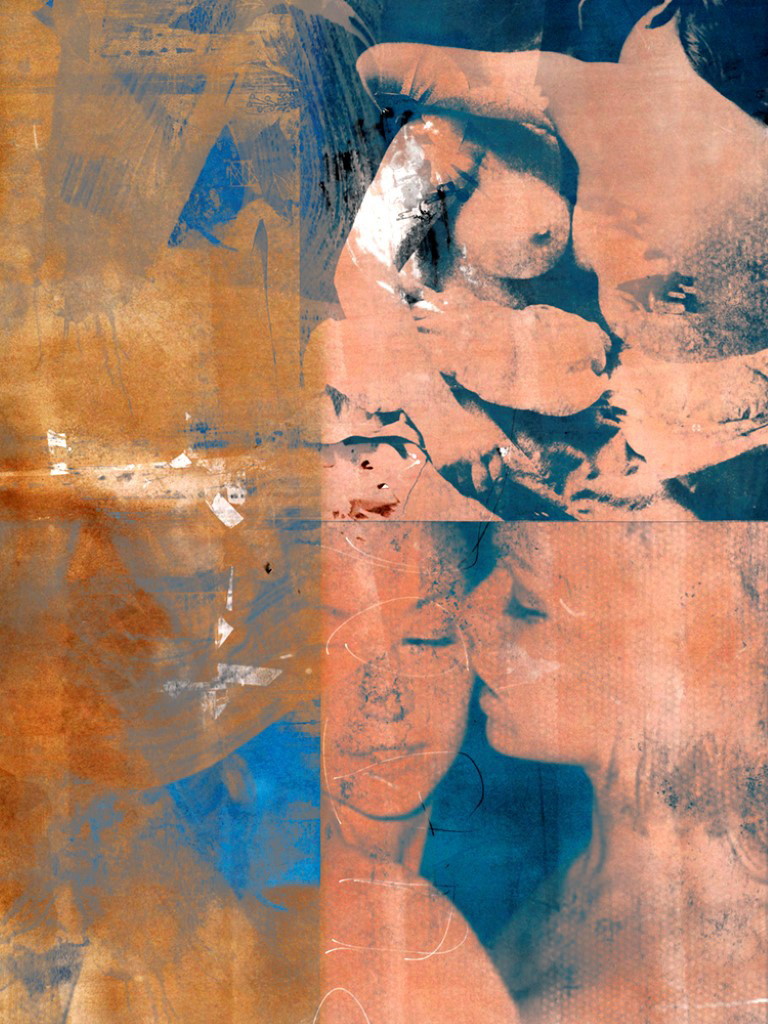
Max de Esteban is an artist based in Barcelona. His work has been featured in solo and group exhibitions at art institutions worldwide including the Deutsche Technik Museum in Berlin, Palais de Tokyo in Paris and Darmstadter Tage der Fotografie and is in the museum collections of the Museum of Fine Arts, Houston; Museu de Arte Modena do Rio de Janeiro in Brazil; and Deutsche Technik Museum in Berlin, Germany, among others. Max holds a PhD from Universitat Ramon Llull and a master degree from Stanford University. Monographs of his work include Elegies of Manumission, Nazraeli Press (2012); Heads will Roll, Hatje Cantz (2014) and Propositions, La Fábrica (2015).The end of Nature as we know it. The substitution of the Fordist-industrial economy for a bio-cybernetic regime. Digitalization transforming Nature itself and our relationship to the Object. Materiality and the object in the age of abstraction; the connection between algorithms and reality, between mathematics and the real; the recreation of the object through digitalization; the paradoxal status of matter, the gesture and the hand in a post-human society.
The flows among artistic media and the engagement in a dialog, on renewed terms, between photography and painting; an experiment on XXIst century photography's aesthetics. The rejection of realist depiction, of linear erspective and, above all, of documentary referentiality. The reactivation of the vital power of images, banalized by daily use and overflow; "a conscious attempt to emancipate photography from its denotative function, aiming to emphasize the epiphanic, immersion value of it".
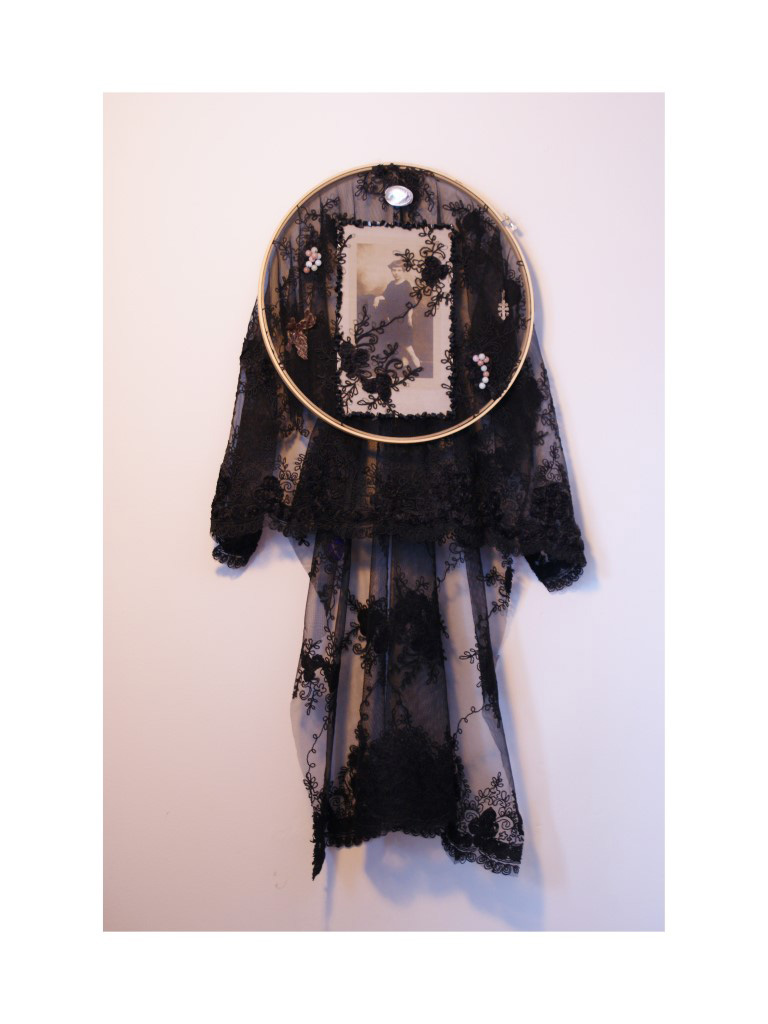
Ludmila Steckelberg is a multidisciplinary brazilian artist based in Montreal, Canada. She is a photographer and she has chosen to explore this medium mostly by means of appropriating and intervention. This past years she began to deeply explore textile as well, as a medium, still having old photographs as the base material of her work. Ludmila have participated in several solo and group exhibitions since her career began in 2005. Her work has being shown in several countries, as Brazil, Canada, Lithuania and Germany. Her pieces are part of private and public collections as the one from the Museum of Modern Art of Rio de Janeiro.
Menina (Girl), is a 2015 work from the Ex-voto series. In this series, the artist constructs magic amulets using fabric, in this case, lace; old black and white photographs and other elements, like beads and found objects. The amulet is known to bring luck and prosperity, and Ludmila recreates its use, in a sort of enchantment for the future, and a celebration of the past. Menina is an amulet specially crafted for the girl she has been. Elements in this work - snake skin, crucifix, colorful beads - suggests the passage of time, the loss of innocence, and the phases of a woman’s life. This work was specially created for her 2015 solo exhibition at Espace Projet gallery in Montreal. The series Ex-voto represents an ode to wishes and good will, crystallized in this sort of oversize amulet.
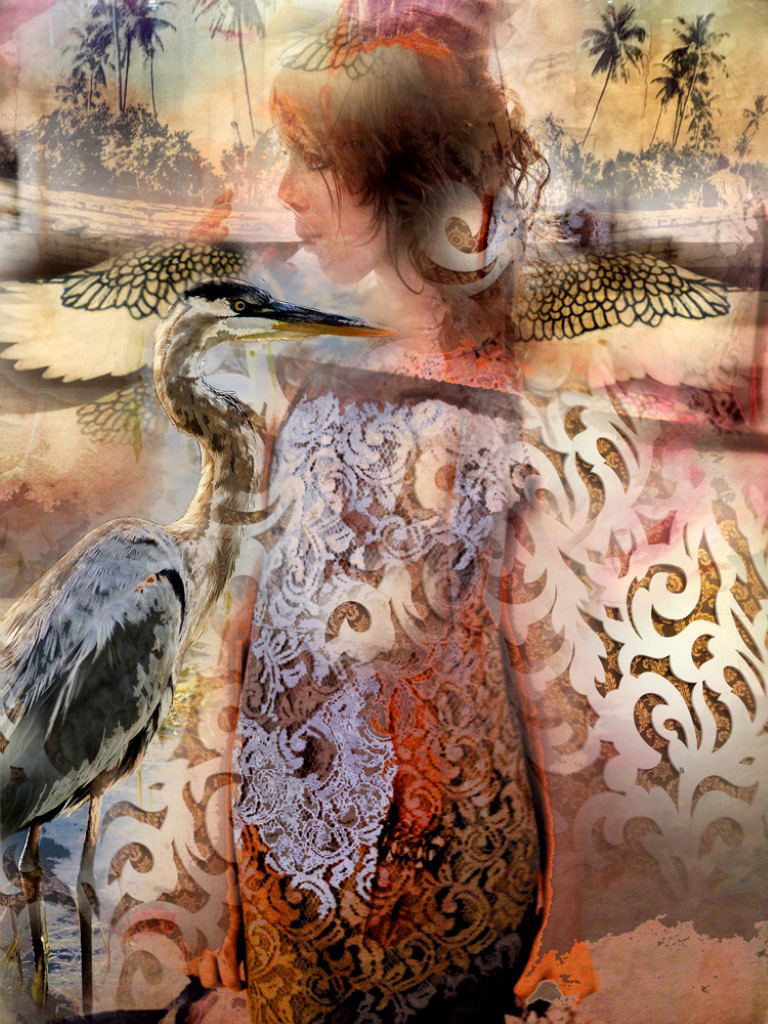
In New Orleans in 1857 a newly formed secret society, the Mistick Krewe of Comus, began the tradition of celebrating Mardi Gras with a torch-lit procession of extravagantly designed floats. My current project, Mistick Krewes, is an homage to the rich jumble of that city’s overlapping cultures and the still perceptible aura of its tempestuous history. Since its founding in 1718, New Orleans’ cultural, political and natural landscapes have been continually invaded and eroded, bought and sold, enriched and transformed. A visitor to New Orleans might pass through districts, buildings and gardens that exhibit the intertwining of centuries of Native American, Spanish, French, African and American influences. City streets are named for Greek muses, native tribes and 18th-century French nobility. Surrounding swamplands are swallowed by encroaching gulf waters. The atmosphere is charged with an air of mystery, a strange sense of desire, and a whiff of something hazily remembered, beckoning from just around the next corner. It is a place where history is revered, and where it can sometimes be ‘mistickally’ re-experienced. In these works I am combining my photographs with images from the internet, print media and old photo albums. Adding layer upon layer, revisiting each composition again and again, I am working toward scenarios that compel even as they may mislead. Interweaving elements from nature, history and contemporary culture conjures up landscapes populated with plants, wildlife, and otherworldly beings, evoking lost cultures and the Mardi Gras costumes that celebrate them.
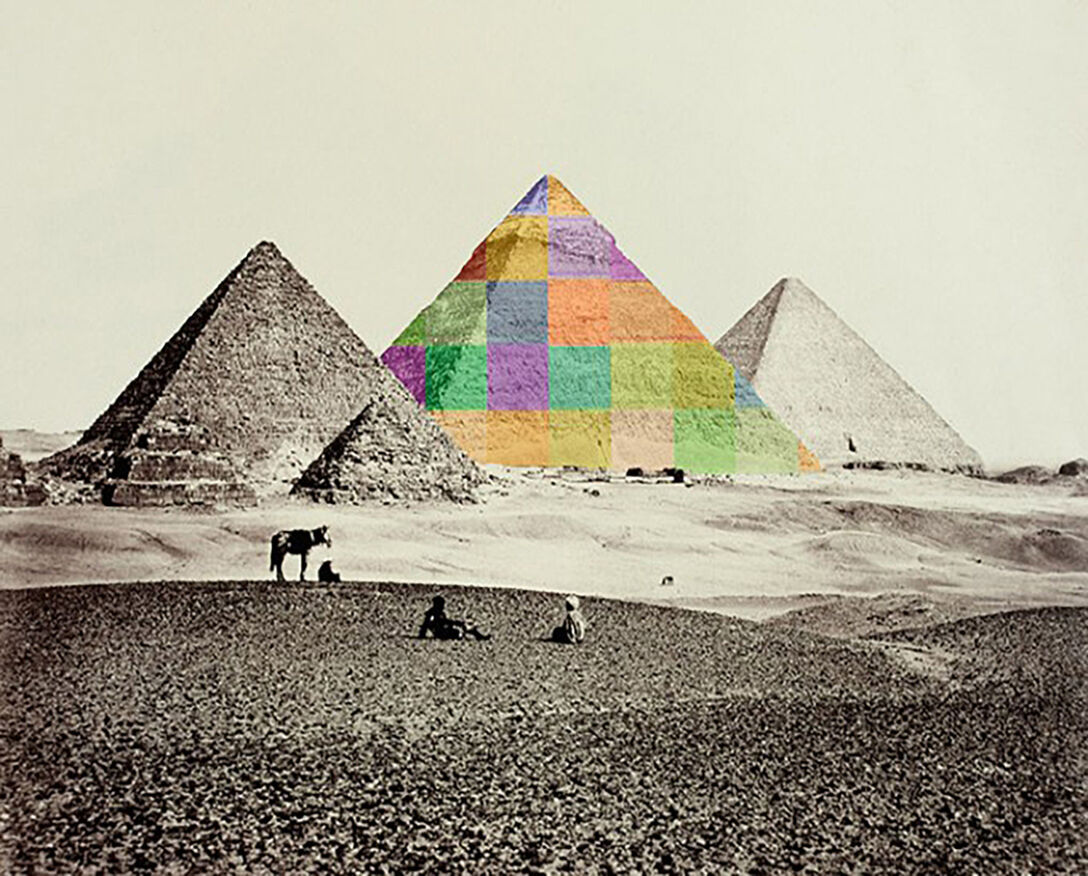
Bill Armstrong is a fine art photographer who has been shooting in color for over 30 years. Mr. Armstrong is represented by ClampArt in New York, Hackelbury in London and numerous galleries across the country and in Europe. His Mandala series was featured in a two-person exhibition at the Philadelphia Museum of Art in 2008, and he had a mid-career retrospective at the Southeast Museum of Photography in Daytona Beach in 2010. Mr. Armstrong’s work is in many museum collections including the Vatican Museum, Victoria & Albert Museum, Philadelphia Museum of Art, Brooklyn Museum, Houston Museum of Fine Arts, Santa Barbara Museum of Art, and the Bibliotheque National de France. He has presented work in numerous museum exhibitions including: Hayward Gallery, London; Musee de l’Elysee, Lausanne; Centro Internazionale di Fotografía, Milan; and FOAM, Amsterdam.
In After: Dreaming in Color, Bill Armstrong imagines the history of photography as if in a dream, making color interventions into iconic photographs from the first century of photography, from the beginning up until the invention of Kodachrome. Armstrong’s process is to transform appropriated images by re-photographing and injecting color, either digitally or by manually using color filters and a light table—or a combination of both. After: Dreaming in Color continues the arc of Mr. Armstrong’s investigation into layering found or appropriated images that he has been pursuing since the late 1970’s, first with collages made from advertising posters and then with the blurred images of the Infinity series that he is known for. In his research, Armstrong has found that the standard histories of photography often somewhat arbitrarily pass over the fact that color has been around since the beginning: in Anna Atkins’ cyanotypes; in opalescent daguerreotypes; in hand–colored and sepia toned photographs. In response to this oversight he has created his own dreamlike history of color photography. It’s a reverie filled with wit, humor and visual puns—and, as always, an eye for the contrast and harmony of color.
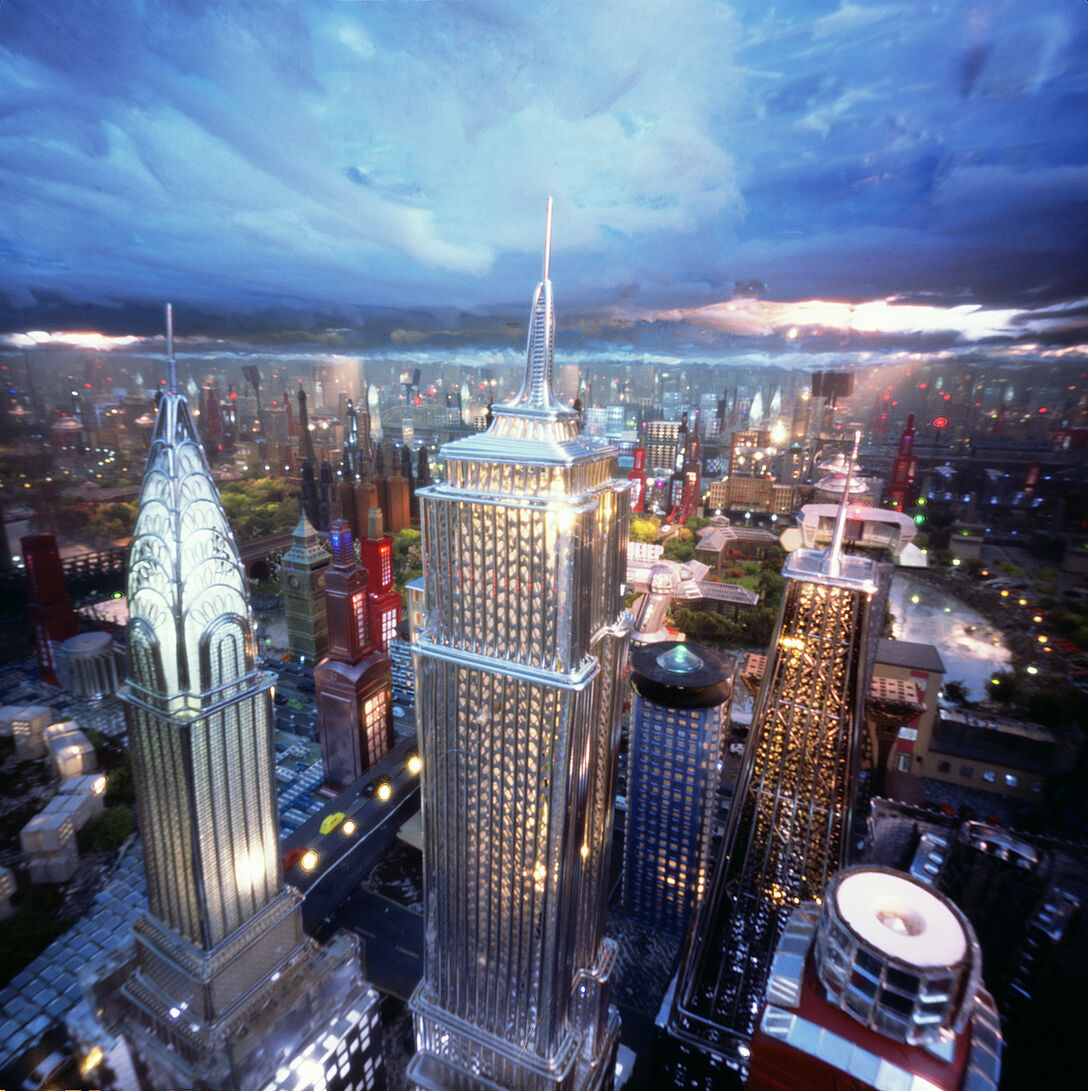
Bethany de Forest Born in Stoneham (Mass) USA in 1966. Studied art in Amsterdam and Utrecht, the Netherlands. Works and lives in Amsterdam. During art school Bethany started creating these diorama’s, which she then photographed. Her objective was to show a “realistic” and slight absurdist imaginary world, in which one can supposedly wander around. Creating the illusion that what we see is life-size, an actual place we can visit. With an ordinary camera the images remained too distant. But with the pinhole camera she was able to capture this feeling.
Her inspiration stems from objects she may find or materials that appeal to her. The settings and ideas often come into being during the creation, due to and kind of action-reaction process. The final result frequently turnes out totally different then from the original beginning fase. The images often have a faraway feel to them. There always seems to be an element of suspense present. A mysterious darkness, seemingly sweet sometimes but coming so close that even butterflies can bite.
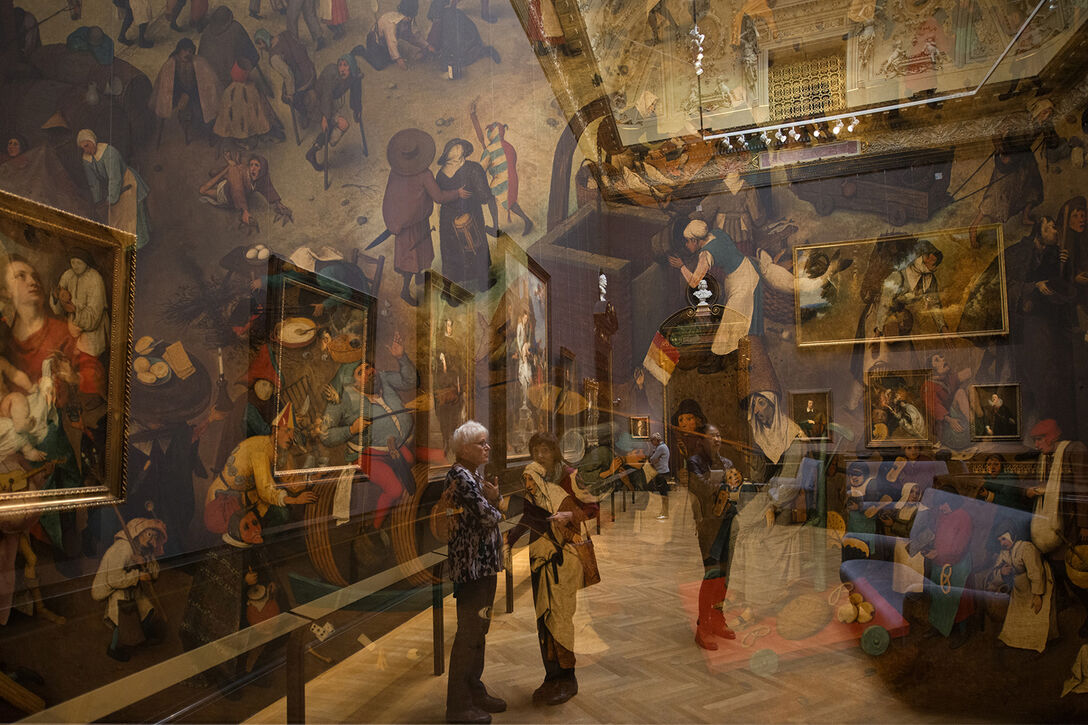
The works of Andrés Wertheim explore the different levels of visible reality. While in his documentary work he records what is situated before our eyes just as we see it, he's also aware that the notion of truthfulness in photographies always generates a doubt: does the camera never lie or is it only a device that captures a moment in a simple attempt to imitate it? As a result, he addresses this ambiguity in his conceptual series. Projecting slides onto faces and bodies he dives into the personality of his models. He clones architectural spaces and turns them into impossible constructions that question the alienation of man in our world. Through double exposures he merges lifeless characters with museum visitors and invites us to rethink our relationship with art. Andrés Wertheim uses the photographic document to create images that play with the viewer's senses, trying to open the doors of our perception.
Andrés was born 1962 in Buenos Aires. At the age of 22, he began to develop a passionate interest on photography, which he was lucky to meet Horacio Coppola, who had studied at the Bauhaus and became a mentor to him. Soon after, he moved to Germany and traveled around the globe, taking part in courses and workshops and documenting with his camera distant places and their inhabitants, striving to seek magic moments. In both assignments and personal work, through 30 years of experience he developed skills that led to publish his works on international media. Lately, some of his series got a turn depicting more conceptual imagery. Andrés Wertheim has been exhibiting his personal projects in museums, fairs and galleries in many countries and some of his works are in public and private collections.
installation
